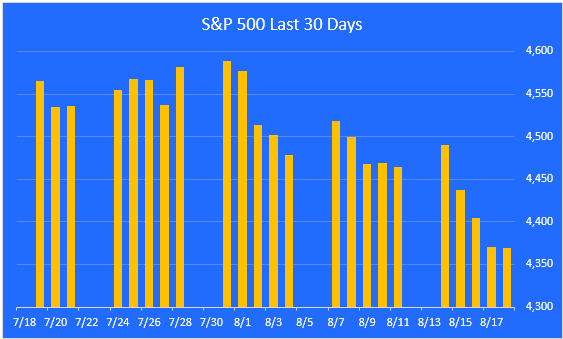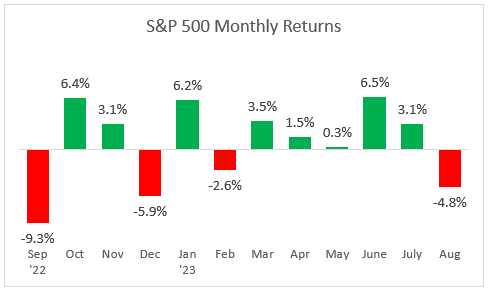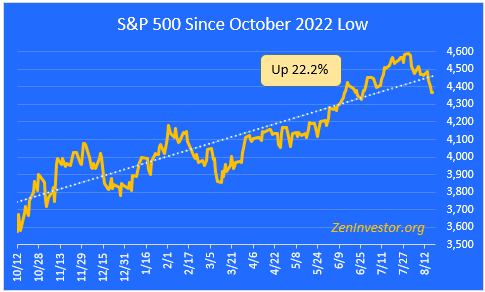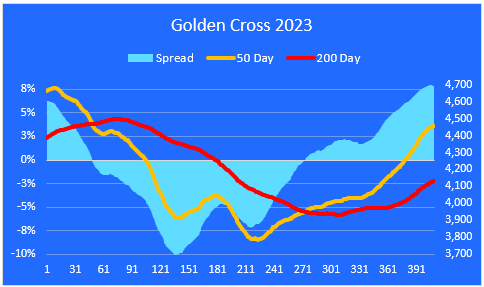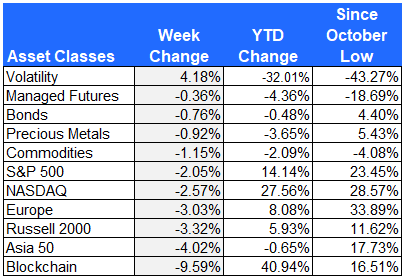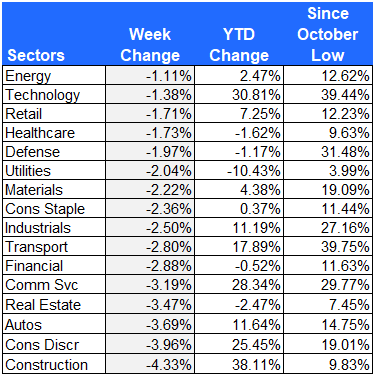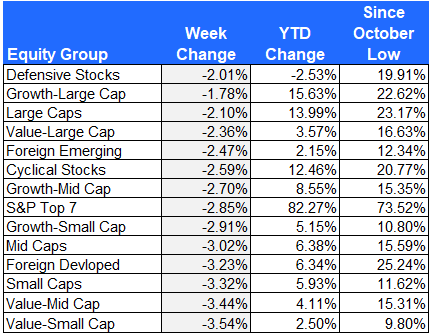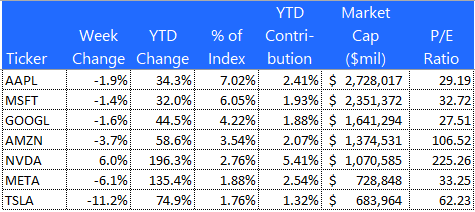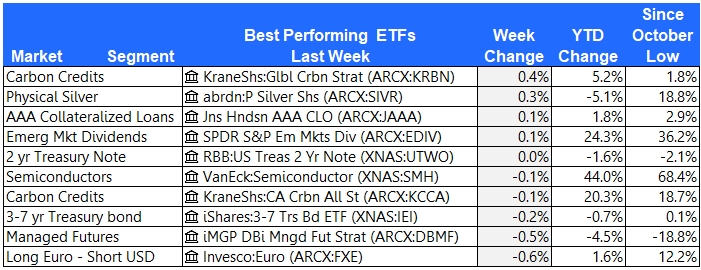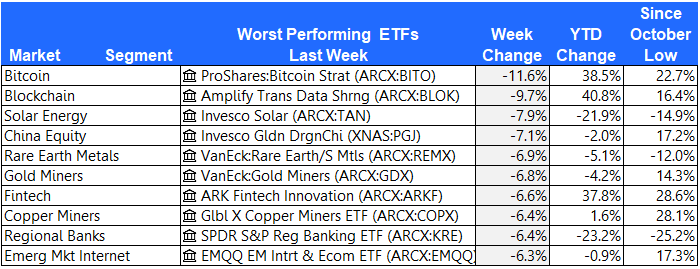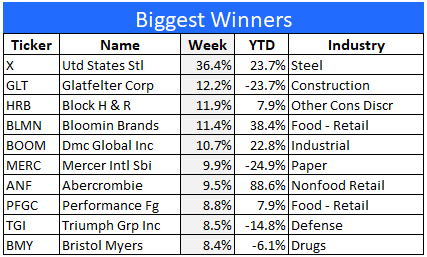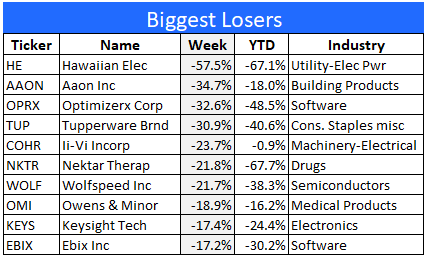In this weekly outlook, I examine the asset classes, sectors, equity groups, ETFs, and individual stocks that are leading the market higher, and which market segments are lagging behind.
By keeping an eye on the leaders and laggards, we can get a sense of where the big money is going, and where it's coming from. Signs that market participation is broadening out are continuing to show up in the data. As this trend continues, it is improving the durability of the rally.
The S&P 500 pullback continues.
A look at monthly returns.
This chart shows the monthly returns for the past year. The August pullback has erased all of the July gains. It looks like we're getting the 5%-7% decline I have been expecting.
The bull market dips below the trend line.
This chart highlights the 22.2% gain in the S&P 500 from the October 2022 low through Friday's close. The index is now 8.9% below its record high close on January 3, 2022.
The Golden Cross.
The market entered a Golden Cross configuration (a Golden Cross occurs when the 50 day moving average crosses above the 200 day) on February 2, 2023.
The spread between these two moving averages is widening. Today it stands at 7.9%, more than three times as wide as the long term average of 2.3%. This wide spread is one of the reasons I'm expecting a pullback of 5-7% for the S&P 500.
Major asset class performance.
Here is a look at the performance of the major asset classes, sorted by last week's returns. I also included the year-to-date returns as well as the returns since the October 12, 2022 low for additional context.
The best performer last week was Volatility, as investors looked for ways to protect their gains from further downside in the market.
The worst performing asset class last week was Blockchain, which gave up 9.6%. This asset class is highly correlated with Bitcoin and other cryptocurrencies, which came under heavy selling pressure last week.
Equity sector performance
For this report I use the expanded sectors as published by Zacks. They use 16 sectors rather than the standard 11. This gives us added granularity as we survey the winners and losers.
All 16 sectors were down for the week, but Energy stocks held up the best.
Construction was the hardest hit, losing 4.33% for the week.
Equity group performance
For the groups, I separate the stocks in the S&P 1500 Composite Index by shared characteristics like growth, value, size, cyclical, defensive, and domestic vs. foreign.
All of the equity groups were down last week. Large cap growth held up the best.
The worst performing group was Small cap value, which lost 3.54%.
The S&P Top 7
Here is a look at the seven mega-cap stocks that have been leading the market all year. Nvidia was the only winner in this group, up 6% for the week.
Tesla was the biggest loser, down 11.2%.
The 10 best performing ETFs from last week
Carbon Credits captured two of the ten spots on the ETF leader board last week. Bonds captured 3 spots as investors rotated away from equities and sought the relative safety that bonds provide.
The 10 worst performing ETFs from last week
Bitcoin had a tough week, sending the Bitcoin ETF down 11.6%. Solar energy continues to struggle this year as high interest rates are making it more expensive for consumers.
The 10 best performing stocks from last week
Here are the 10 best performing stocks in the S&P 1500 last week.
US Steel received a surprise $7.8 Billion bid from James Bouchard. Carlson Capital, a Dallas-based hedge fund, acquired a significant stake in GLT.
The 10 worst performing stocks from last week
Here are the 10 worst performing stocks in the S&P 1500 last week.
Hawaiian Electric cratered due to investor concerns about their culpability for the wildfires in Hawaii.
Final thoughts
The S&P 500 was down 2.1% last week. I have been expecting a pullback of 5-7%, which has now begun. I see this as a positive development since it will wring some of the froth out of the market and allow earnings to catch up with prices. As long as small caps, mid caps, and value stocks continue to outperform the S&P Top 7 mega-caps, I think a 5-7% pullback would improve the sustainability of this bull market.

